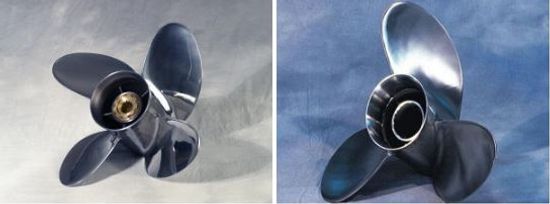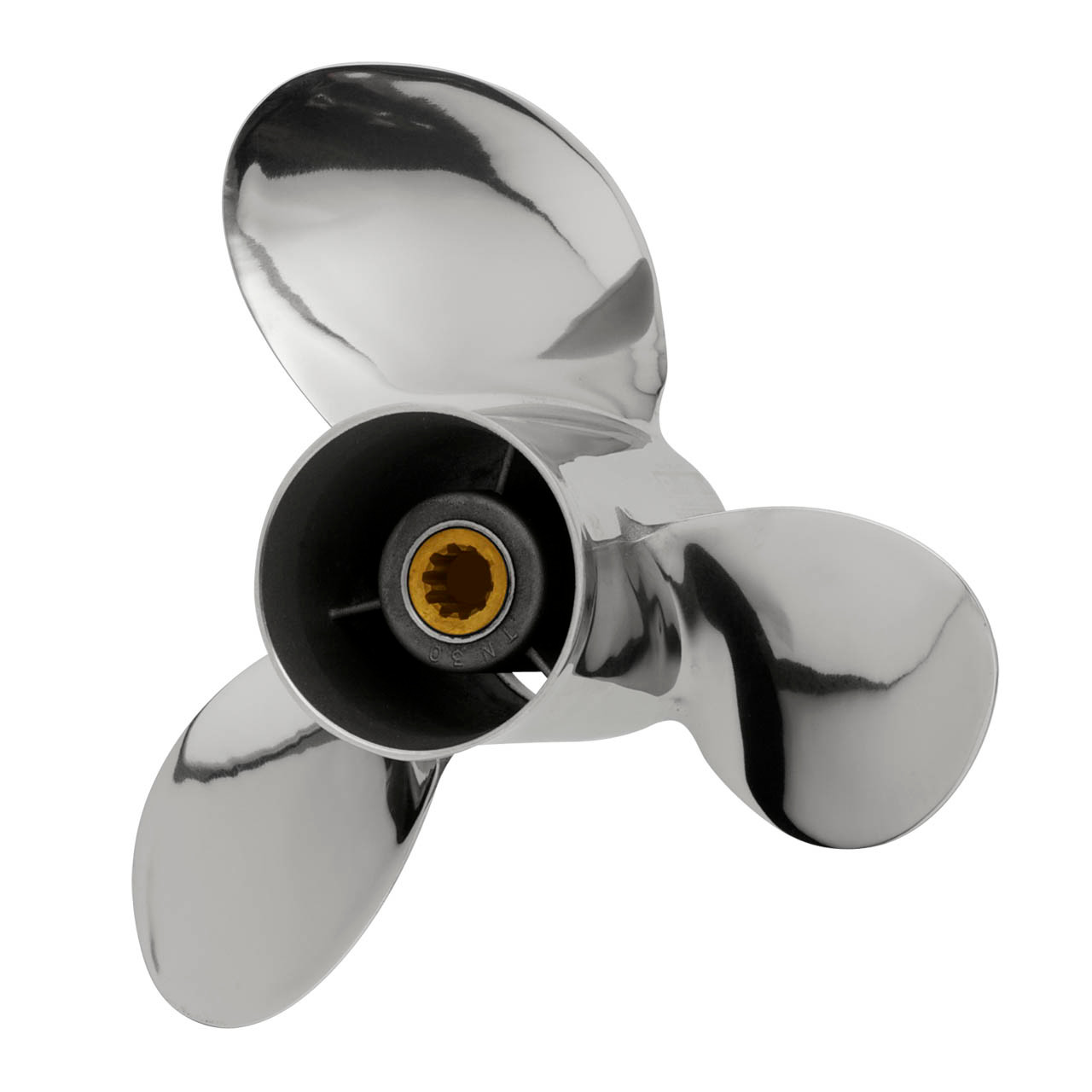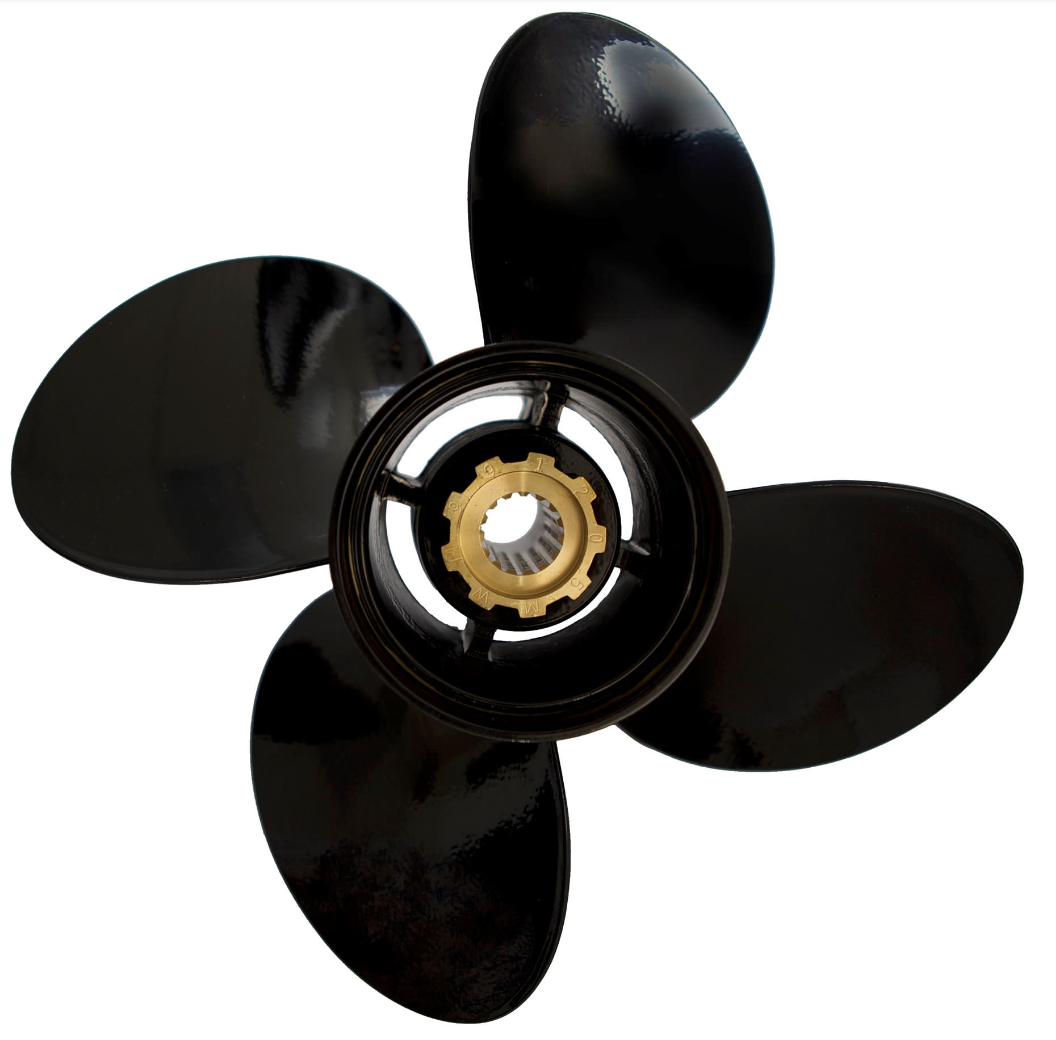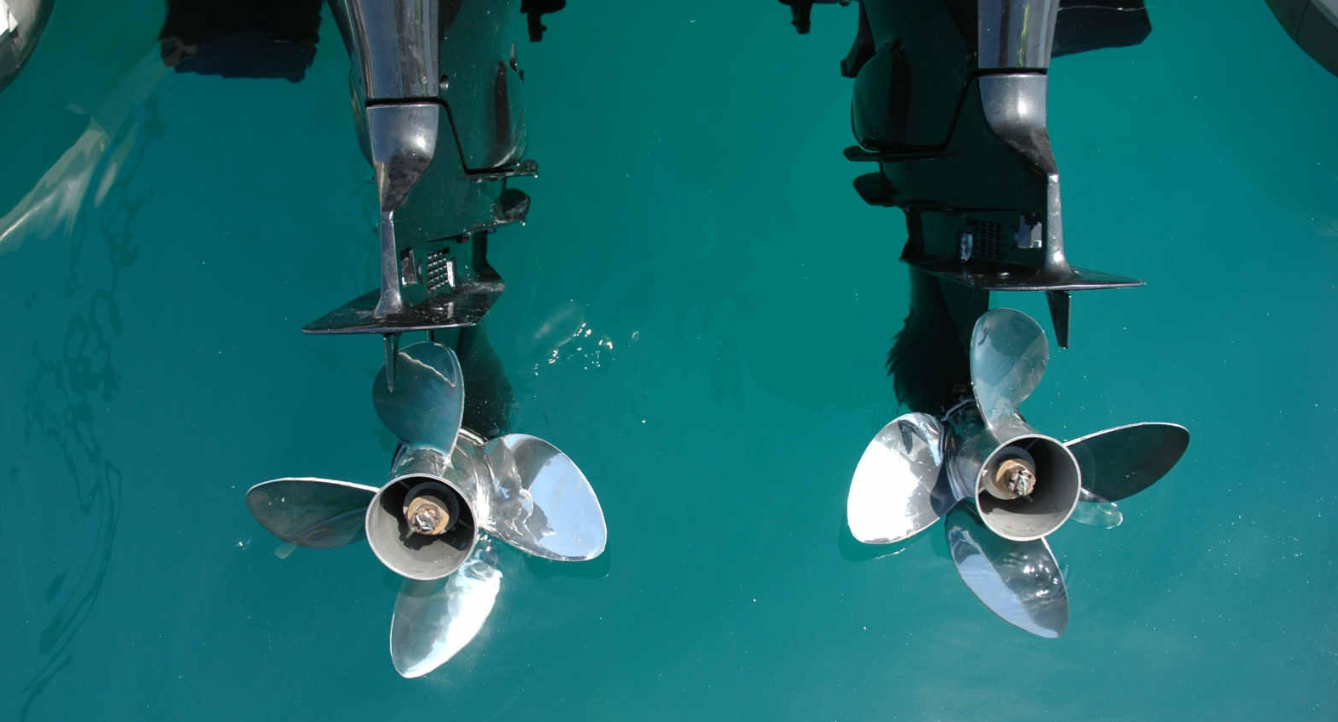Three-Blade Versus Four-Blade Propellers

There are so many things to consider when it comes to buying a propeller. Among the available options are a choice between three- and four-blade models for sterndrive and outboard-powered boats. Hopefully, we can clear up things for you.
Ignoring the outer diameter, rotation direction and pitch of a propeller, the number of blades is one of the most important features. It’s also a topic that we get frequent questions about. On paper, it’s simply the addition or removal of a blade. As you might expect, a 4-blade prop has one more blade than a 3-blade.
Since there’s a market for both options, you should expect that there are more differences than just the number of blades. The number of blades plays a huge role when it comes to the physics behind powering and steering your craft. With a different number of blades, you’ll find a different pitch. The 3-blade option has to make up more ground, so it will have a steeper (more extreme) pitch.
3-Blade Prop

Let’s start with the three-blade prop and look at what makes this option so favorable and unfavorable to boat owners.
Less Blade Area
Blade area determines how much force can be exerted on the water while a prop spins. It also translates to the level of vibrations that you’ll feel as your boat chugs along. With fewer blades, a 3-blade prop has less blade area. This also means that less force can be exerted and vibrations are more extreme.
There’s also more drag in a 3-blade prop. If you’re trying to maximize the efficiency of your blades and minimize the vibrations, this is the wrong way to go.
Higher Top Speed
By stripping the extra blade, there’s less drag on a 3-blade propeller. Less drag equates to a higher top speed since there’s less slowing down the boat. If sheer speed is your cup of tea, the best option is to go for the fewest blades on your propeller.

More Common Option
There are a few features of the 3-blade prop that combine and make it the most common option on the water. It’s more affordable, available in more sizes and has a higher top speed.
Many buyers might base their decision around which option sells better. In this case, the 3-blade propeller sells more units than its 4-blade counterpart.
4-Blade Props
Now let’s talk about 4-blade props. This section will highlight what makes them so great and some features that people aren’t super happy with.
Extra Drag
We keep talking about the idea of drag, and this is where it pops up again — 4-blade props have more drag. Drag slows down everything down in your boat. It’s similar to air resistance when you’re looking at a car or airplane. A boat’s hull is shaped to minimize drag. Unfortunately, adding the extra blade means adding some extra drag to your boat.

More Horsepower
Although it has more drag, a 4-blade propeller can generate more horsepower at the same rpm as a 3-blade. If you look at a single rotation of a propeller, you’ll see why.
When a 4-blade prop spins once, four blades are pushing away water and creating a more forward launch for the boat. During the same rotation, a 3-blade prop only has three blades doing work.
Horsepower on the water lets you carry heavier cargo and tow more weight. It doesn’t overpower the added drag when it comes to the craft’s top speed. The 3-blade prop still has a higher top speed.
Less Vibration at High Speeds
When you’re going fast, boaters want to have an enjoyable ride. Vibrations will ruin the feel of your boat as you ride along. Because 4-blade props are more powerful and more forgiving, they can absorb more vibrations than a 3-blade can.

Which Boats Should Use 3-Blade Props?
3-blade props are especially good for boats with 3- 4- and 6-cylinder outboard and I/O engines.
Fewer props allow for a higher top speed but less horsepower. Since recreational boats are often lighter, you aren’t losing much. You’ll achieve a higher speed and have more fun on the open water.

Which Boats Should Use 4-Blade Props?
4-blade propellers should be reserved for larger boats. We always suggest them for people who own bass boats or any vessel with a high-performance hull.
Since there is more horsepower available and fewer vibrations at higher speeds, 4-blade props are the perfect choice for these boaters.